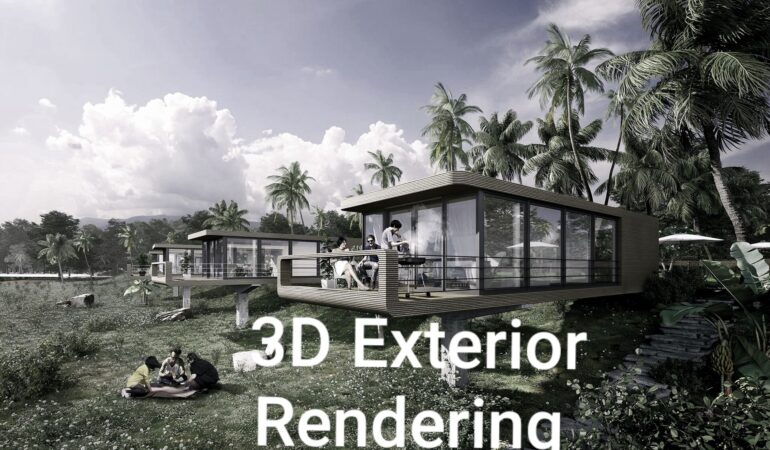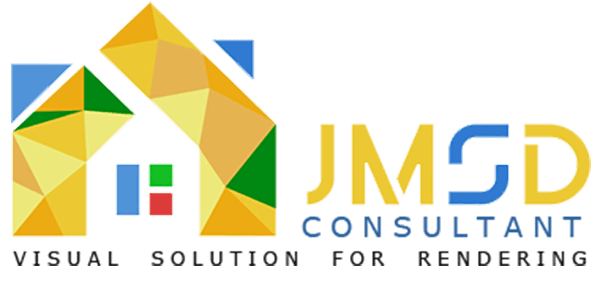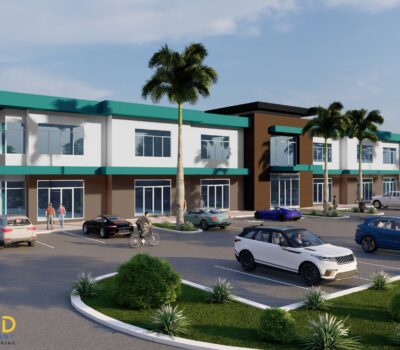In the ever-evolving landscape of technology and design, 3D rendering has emerged as a game-changer. As we step into the year 2024, the world of 3D rendering is poised for remarkable transformations that will redefine how we visualize and interact with the digital world. In this article, we’ll explore the top 3D rendering trends for 2024 that are set to shape the future of this dynamic industry.

3D rendering has come a long way since its inception. It has transcended the boundaries of industries, from architecture and gaming to healthcare and entertainment. In 2024, the evolution continues, and we witness a series of groundbreaking trends that will redefine how we perceive and interact with the digital realm.
Real-Time Rendering Trends Takes Center Stage
One of the most significant trends for 2024 is the dominance of real-time rendering. With the advent of powerful GPUs and advanced algorithms, designers and developers can now create and manipulate 3D visuals in real-time. This will revolutionize industries such as gaming, where responsive and immersive environments are paramount.
AI Rendering Trends for Unparalleled Realism
Artificial Intelligence (AI) is set to play a pivotal role in rendering. AI-driven rendering engines can produce astonishingly realistic visuals by analyzing data and learning from it. This technology will find applications in architecture, film production, and product design, enhancing the quality of visuals like never before.
Cloud Rendering Trends Solutions: Accessibility and Scalability
The cloud is making 3D rendering Services more accessible and scalable. Rendering tasks that once required powerful hardware can now be offloaded to cloud servers. This democratization of rendering resources allows small businesses and independent creators to compete on a global scale.
Sustainable Rendering Trends: Eco-Friendly Innovations
Sustainability is a key concern in today’s world, and the 3D rendering industry is no exception. Trends in 2024 will focus on reducing the environmental footprint of rendering processes. Energy-efficient algorithms and hardware will be embraced to minimize energy consumption.
Immersive Augmented Reality (AR) and Virtual Reality (VR) Experiences
AR and VR are gaining prominence across various industries. In 2024, 3D rendering will further empower these technologies, creating immersive experiences for users in fields like education, healthcare, and marketing.
Blockchain in Rendering Trends: Ensuring Security and Transparency
Blockchain technology is not limited to cryptocurrencies. It also offers enhanced security and transparency in 3D rendering projects. By recording every change and transaction, blockchain ensures the integrity of digital assets.
Generative Adversarial Networks (GANs) for Content Creation
GANs will continue to redefine content creation. In 2024, we’ll see GANs generating highly detailed 3D models, textures, and animations, reducing the manual labor involved in the creative process.
Cross-Platform Compatibility: Seamless Integration
As technology becomes more interconnected, cross-platform compatibility becomes crucial. 3D rendering solutions in 2023-24 will prioritize seamless integration across devices and software, making workflows more efficient.
The Rise of Mobile Rendering Trends Applications
With the growing power of smartphones, mobile rendering applications are set to thrive. These apps will enable users to create and view 3D content on the go, opening up new possibilities in industries like e-commerce and social media.
Personalization and Customization: Tailoring Visuals to Perfection
3D rendering Trends in 2024 will allow for unprecedented personalization. Businesses can create custom visuals tailored to individual preferences, enhancing user engagement and satisfaction.
Collaborative Rendering Trends: Enhancing Teamwork and Efficiency
Collaboration is key in many industries, and 3D rendering is no exception. In 2024, collaborative rendering Trends tools will facilitate teamwork among designers, architects, and artists, improving efficiency and creativity.
Holographic Rendering Trends: Bridging the Physical and Digital Worlds
The line between physical and digital realities will blur with holographic rendering Trends. This trend will find applications in teleconferencing, education, and entertainment, creating truly immersive experiences.
Challenges and Ethical Considerations in 3D Rendering Trends 2024
While 3D rendering advances, it also raises ethical questions. Privacy concerns, intellectual property issues, and the potential for misuse of AI-generated content are challenges that must be addressed in 2024 and beyond.
Conclusion :
In summary, the trends in 3D rendering for 2024 indicate significant technological progress aimed at promoting sustainable environmental protection. This reflects the dynamic growth of the 3D rendering sector. We can anticipate further rendering innovations that will enhance user experiences in the near future.
The year 2024 holds immense promise for the 3D rendering industry. As real-time rendering, AI-driven innovations, and sustainable practices take center stage, we are on the cusp of a new era in visual storytelling and design. Embracing these trends will not only redefine how we perceive the digital world but also push the boundaries of human creativity.
Find top-rated 3D rendering services for your home Design project. JMSD Consultant is a Top Architecture Visualization Studio Outsourcing partner of Architectural Visualization and 3D Rendering Services based in USA.
Contact us here for 3D Rendering Services now!? Reach us out with DM here on: | Get in touch email us at [email protected]
FAQs :
Q1 : What is real-time rendering, and how does it impact the gaming industry?
Ans 1 : Real-time rendering refers to the process of generating and displaying 3D visuals in real-time, allowing for immediate interaction and response. In the gaming industry, it leads to more immersive and responsive gaming experiences.
Q2 : How can AI-powered rendering enhance architectural design?
Ans 2 : AI-powered rendering can analyze data and generate highly realistic architectural visualizations, helping architects and designers make informed decisions and present their ideas convincingly.
Q3 : What are the environmental benefits of sustainable rendering?
Ans 3 : Sustainable rendering reduces energy consumption and carbon emissions, contributing to a more environmentally friendly approach to digital design and content creation.
Q4 : How does blockchain technology improve security in 3D rendering?
Ans 4 : Blockchain records every change and transaction in a rendering project, ensuring the integrity and security of digital assets by making it virtually tamper-proof.
Q5 : What are the potential ethical concerns surrounding 3D rendering?
Ans 5 : Ethical concerns in 3D rendering include issues related to privacy, intellectual property, and the responsible use of AI-generated content. Addressing these concerns is crucial for the responsible development of the industry.





